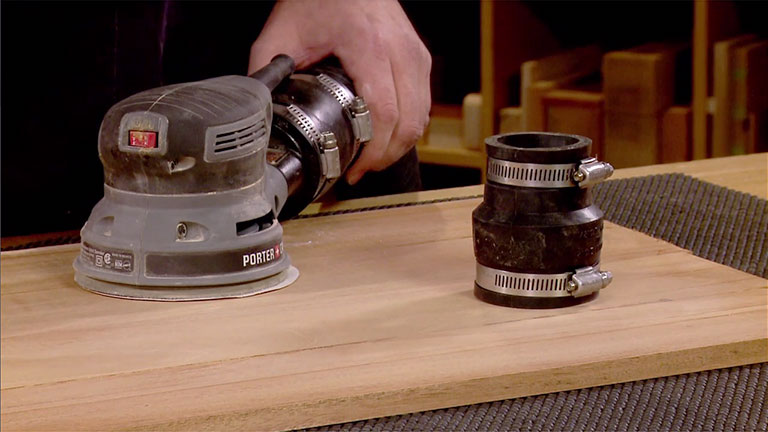In woodworking, solving problems is the name of the game. The real head scratchers come when things go wrong. The inset photo here shows a good example. The torn-out veneer is an eyesore on an otherwise nice desktop. Whether it’s a new project or an existing piece, repairing veneer is something most of us will face. The solution is applying straightforward techniques. The photos on the slides highlight the process. I’ll touch on a few items to help you get the best results.

The starting point for a seamless patch is to make the void and the patch identical in shape. To do this, I like to make a template out of thin cardboard. The template is used for two tasks. The first is to create a smooth, consistent opening. Then it’s used to make a matching patch. The patch should follow the grain as much as possible. Seams that cut straight across the grain are more noticeable. That’s why the template shown here has a long, tapered end. Draw the profile of the template on cardboard that’s slightly larger than the damaged area.

I place the patch over the corner and trace its profile directly onto the desktop to guide the cleanup.

I found a piece of solid wood that’s a close color and grain match to create a patch.

Go over the lines with a utility knife to score the veneer and remove the waste.

Carefully remove the waste from the damaged area. Work to keep the bottom of the recess flat.

Cut a plywood caul to the shape of the patch to provide even clamping pressure.

When the glue is dry, scrape away the glue and level the patch with the surface. An oil finish shows how well the patch blends with the original veneer. Most of the time, you want people to admire your woodworking skills. In this case, the big reward comes when the result of your time and efforts isn’t noticed at all.











